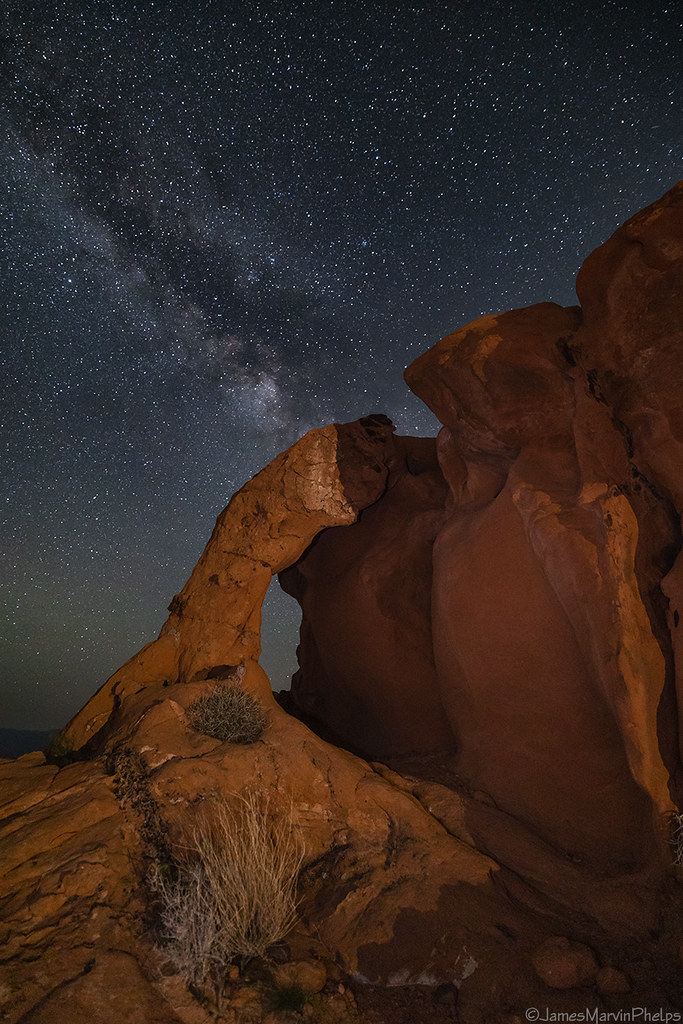#milky way galaxy
Text
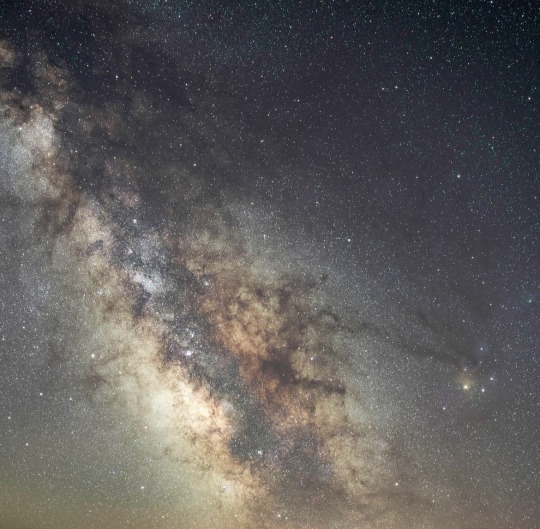
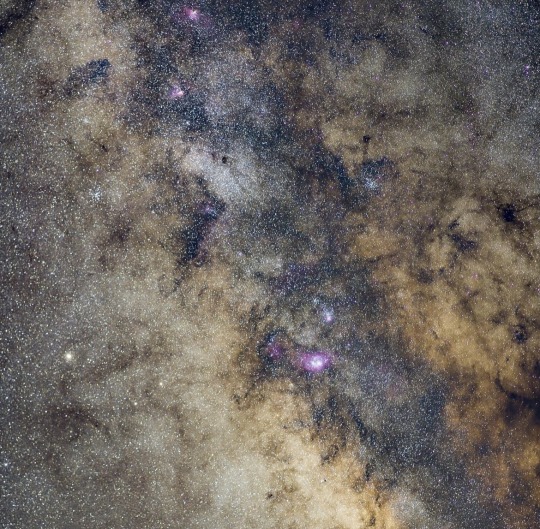
Milky Way captured by Jonathon Wilcox on Instagram
580 notes
·
View notes
Text
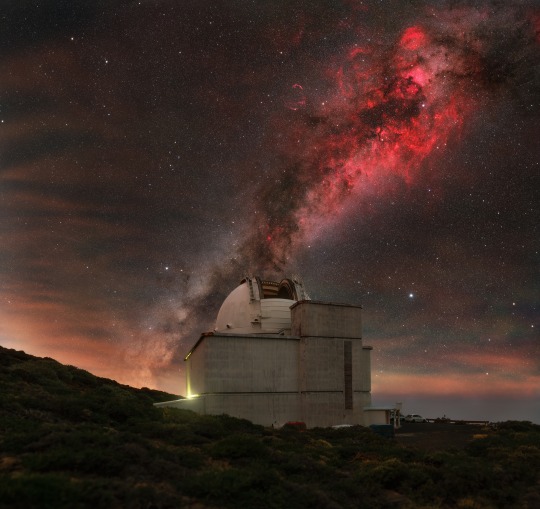
The Milky Way and its red nebulae hanging over the Isaac Newton Telescope at La Palma // Jakob Sahner
#astronomy#astrophotography#night sky#landscape#beautiful#galaxy#spiral galaxy#milky way#milky way galaxy#our galaxy#our home#la palma#canary islands#isaac newton telescope
448 notes
·
View notes
Text

The local neighborhood (the Milky Way Galaxy): via @MAstronomers on Twitter
589 notes
·
View notes
Text
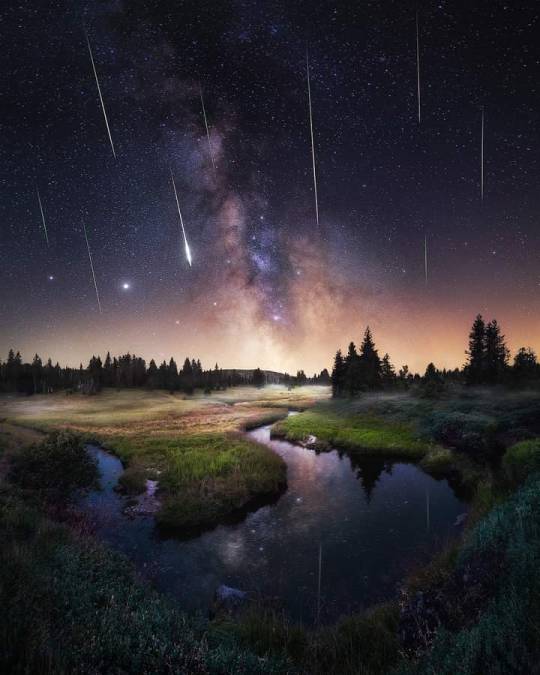
"Perseids over the Bohemian Forest" 🌌 Counted over 70 meteors painting the night sky in one hour!
📸 Thomas Havel Photography
The composite image was taken from Březník on the northern edge of the Luzenské valley in Šumava National Park. The whole location is in the middle of wild forests and is one of the darkest places in the Czech Republic. The night sky includes the central arch of our Milky Way Galaxy and the planets Saturn and Jupiter on the left side of the Milky Way. Make a wish! 💫
#Thomas Havel Photography#Perseids#Meteors#Night Sky#Czech Republic#Milky Way Galaxy#Saturn#Jupiter#Amazing#Nature#Travel
308 notes
·
View notes
Text
The Year’s Most Spectacular Photos from the James Webb Telescope
By Jeffrey Kluger
December 22, 2023

Close to 1,500 light years from Earth lie a pair of baby stellar twins known as Herbig-Haro 46/47 — which are barely a few thousand years old.
A star the size of our sun, by contrast, takes an average of 50 million years to reach even the stellar equivalent of young adulthood It's Herbig-Haro 46/47's extreme youth that gives the formation more of a blob-like appearance than the stellar duo it is.
Young stars are buried in clouds of dust and gas, which they absorb as they grow. Sometimes, however the infant stars ingest too much material too fast.
When that happens, dust and gas erupts from both sides of the formation, giving the young pair their misshapen look.
But if you have patience — 50 million years worth of patience — what is a blob today will be stars tomorrow.
NASA, ESA, CSA. Image Processing: Joseph DePasquale (STScI)
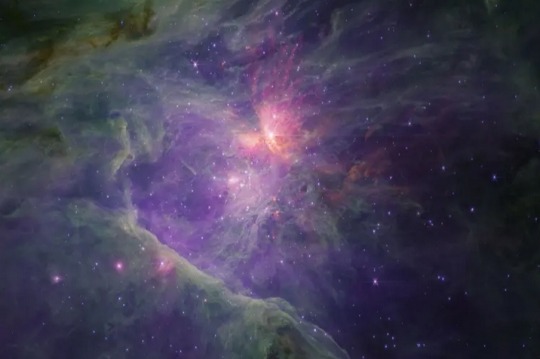
A pair of brilliant stellar nurseries located 1,600 light years from Earth, the Orion Nebula and Trapezium Cluster are home to a relative handful of very young but very bright stars.
Four of the stars are easy to see with a simple, amateur, four-inch telescope.
One of the four — the beast of the young litter — is especially visible, a full 20,000 times brighter than our sun.
Apart from their four main stars, the Orion Nebula and Trapezium cluster contain approximately 700 additional young stars at various stages of gestation.
NASA, ESA, CSA/Science leads and image processing: M. McCaughrean, S. Pearson, CC BY-SA 3.0 IGO

(L): It’s not easy being a Wolf-Rayet star, like this specimen imaged by the Webb telescope at a distance of 15,000 light years.
A rare species of stellar beast — NASA estimates there are only 220 of them in a Milky Way galaxy with at least 100 billion stars — the Wolf-Rayet burns hot and burns fast, with temperatures 20 to 40 times the surface of the sun.
All of that rapidly expended energy causes the star to lose its hydrogen envelope quickly and expose its helium core.
The result: a very early and very violent death.
A star like our sun burns for about 10 billion years. As for a Wolf-Rayet? Just a few hundred thousand before it dissolves into cosmic dust.
NASA, ESA, CSA, STScI, Webb ERO Production Team
(R): If the Wolf-Rayet star dies an ugly and violent death, the celebrated Ring Nebula, photographed by the Webb at a distance of 2,000 light years from Earth, has been expiring beautifully.
The glowing remains of a sun-like star, the nebula was discovered in 1779 by the French astronomer Antoine Darquier de Pellepoix.
As the nebula throws off its outer layers of ionized gas, it reveals its characteristic blue interior, composed of hydrogen and oxygen that have not yet been expelled off by the nebula’s stellar wind.
ESA/Webb, NASA, CSA, M. Barlow (University College London), N. Cox (ACRI-ST), R. Wesson (Cardiff University)
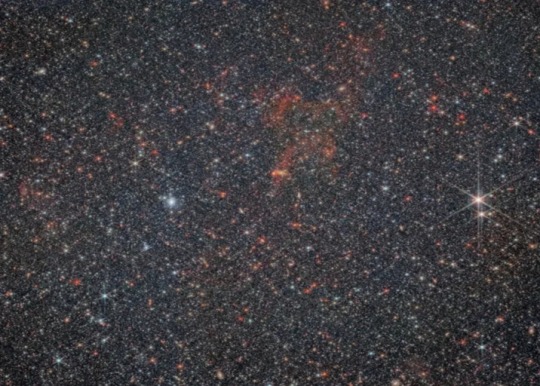
Dwarf galaxy NGC 6822 lives up to to its name — home to just 10 million stars, compared to the minimum of 100 billion in the Milky Way.
But what NGC 6822 lacks in numbers, it makes up in spectacle — which the keen eye of the Webb telescope has revealed.
Discovered in 1884 by American astronomer E.E Barnard, NGC 6822, is now known to have a prodigious dust tail measuring 200 light years across..
What's more, it's home to a dense flock of stars that glow 100,000 times brighter than our sun.
ESA/Webb, NASA & CSA, M. Meixnev

Spiral galaxies are often defined by uneven — and even ragged — arms.
But not galaxy M51, which lies 27 million light years from Earth and is defined by the tautness of its arms and the compactness of its structure.
M51 isn't alone in space. Nearby lies the companion galaxy NGC 5195.
The two galaxies are engaged in something of a gravitational tug of war — one that the NGC 5195 is winning.
NGC's constant gravitational pull is thought to account for both the tightly woven structure of M51's arms and for tidal forces that are thought lead to the creation of new stars in the arms.
ESA/Webb, NASA & CSA, A. Adamo (Stockholm University) and the FEAST JWST team
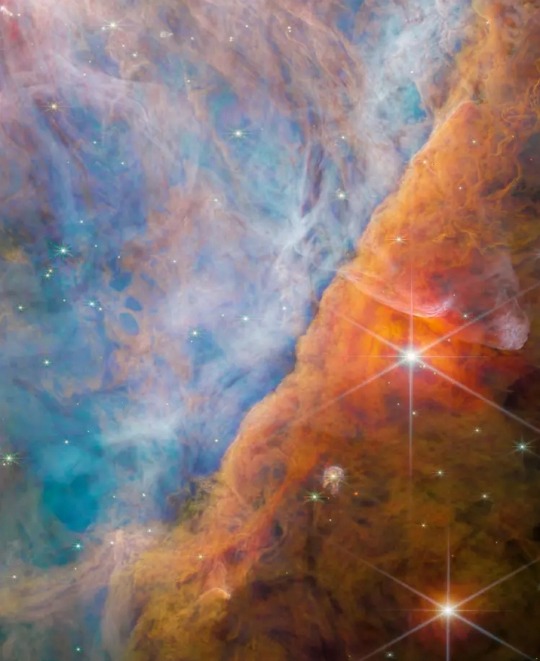
Just below Orion’s belt lies one of the most celebrated objects in the night sky: the Orion Nebula, a stellar nursery that is home to about 700 young stars.
This Webb image focuses not on the entirety of the nebula but on a structure in the lower left-hand quadrant known as the Orion Bar.
So named because of its diagonal, ridge-like appearance, the bar is shaped by the powerful radiation of the hot, young stars surrounding it.
ESA/Webb, NASA, CSA, M. Zamani (ESA/Webb), and the PDRs4All ERS Team

A baby by stellar standards, the IC 348 Star cluster is just five million years old and located about 1,000 light years from Earth.
Composed of an estimated 700 stars, IC 348 has a structure similar to wispy curtains, created by dust that reflects the light of the stars.
The conspicuous loop in the right hand side of the image is likely created by the gusting of solar winds blowing in the direction that, from Earth, would be west to east.
NASA, ESA, CSA, STScI, Kevin Luhman (PSU), Catarina Alves de Oliveira (ESA)
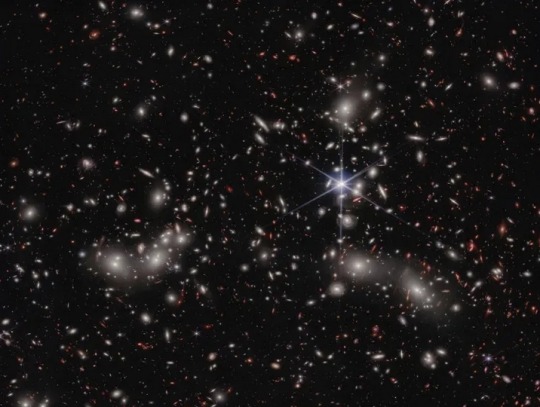
When it comes to galaxies, there's big and then there's huge and by any measure, Pandora's Cluster — more formally, known as Abell 2744 — qualifies as the latter.
Not just a galaxy, and not even a cluster of galaxies, Abell 2744 is a cluster of four clusters, which long ago collided with one another.
Located 3.5 billion light years from Earth, Pandora's Cluster measures a staggering 350 million years across.
The cluster's massive collective gravity allows astronomers to use it as a gravitational lens, bending and magnifying the light of foreground objects, making them easier to study.
NASA, ESA, CSA, I. Labbe (Swinburne University of Technology) and R. Bezanson (University of Pittsburgh). Image processing: Alyssa Pagan (STScI)

Webb was built principally to look at the oldest and most distant objects in the universe, some of 13.4 billion light years away.
But doesn't prevent the telescope from peering into its own back yard.
This image of Saturn and some of its 146 moons, rivals the images obtained by the Pioneer and Voyager probes.
NASA, ESA, CSA, STScI, Matt Tiscareno (SETI Institute), Matt Hedman (University of Idaho), Maryame El Moutamid (Cornell University), Mark Showalter (SETI Institute), Leigh Fletcher (University of Leicester), Heidi Hammel (AURA). Image processing: J. DePasquale (STScI)

Infant stars are born all over the universe, but the closest stellar birthing suite to Earth is the Rho Ophiuchi cloud complex, located just 460 light years distant.
A turbulent — even violent — place, Rho Ophiuchi is defined by jets of gas roaring from young stars.
Most of the stars in this comparatively modest nursery are more or less the size of the sun.
But one, known as S1, is far bigger — so much so that it is self-immolating, carving a great cavity around itself with its stellar wind, the storm of charged particle's all stars emit, though few with the gale-force power of S1.
NASA, ESA, CSA, STScI, Klaus Pontoppidan (STScI)
#James Webb Telescope#James Webb Space Telescope#telescope#space#stars#galaxies#universe#cosmos#astronomy#space photography#photpgraphy#NASA#galactic clusters#milky way galaxy#Orion’s belt#Orion Nebula#Orion Bar#Pandora's Cluster#Saturn#Rho Ophiuchi cloud complex#Trapezium Cluster#Wolf-Rayet#Ring Nebula#Antoine Darquier de Pellepoix#E.E Barnard#spiral galaxy#nebula
58 notes
·
View notes
Text

SPACEMAS DAY 16 ✨🪐🌎☄️☀️🌕
This featured wide-angle mosaic was taken over the steppe golden fields in Mértola, Portugal in 2020. From such a dark location, an immediately-evident breathtaking glow arched over the night sky: the central band of the Milky Way galaxy. But this sky had much more. Thin clouds crossed the sky like golden ribbons. The planet Mars appeared on the far left, while Saturn and Jupiter were also simultaneously visible. However on the opposite side of the sky, here seen on the far right. Near the top of the image the bright star Vega can be found, while the far-distant and faint Andromeda Galaxy can be seen toward the left, just below Milky Way's arch.
Image Credit & Copyright: Miguel Claro (TWAN, Dark Sky Alqueva)
#astronomy#space#science#universe#spacemas#day 16#Milky Way#galaxy#planets#mars#jupiter#Saturn#Portugal#andromeda#Milky Way galaxy#andromeda galaxy#Vega#follow#like#reblog#the first star#the first starr#thefirststar#thefirststarr#nasa#apod#tumblr#blog#space blog#solar system
110 notes
·
View notes
Text

Feynman: When we were talking about the atoms, one of the troubles that people have with the atoms is that they're so tiny, and it's so hard to imagine the scale.
The size of the atoms are in size - compared to an apple, it's the same scale as an apple is to the size of the Earth. And that's a kind of a hard thing to take, and you have to go through all these things all the time, and people find these numbers inconceivable. And I do too.
The only thing you do is you just change your scale. I mean, you're just thinking of small balls, but you don't try to think of exactly how small they are too often! Or you'd get kind of a bit nutty, alright?
But in astronomy, you have the same thing in reverse because the distances to these stars is so enormous, you see. You know that light goes so fast that it only takes a few seconds to go to the moon and back, or it goes around the Earth seven-and-a-half times in a second. And goes for a year, two years, three years before it gets to the nearest other star that there is to us.
But all of our stars are... the stars that are nearby in a great galaxy, a big mass of stars, which is called a galaxy, a group, well this, our galaxy is... what is it? Something like a hundred thousand light years, a hundred thousand years.
And then there's another patch of stars. It takes a million years for the light to get here, going at this enormous rate.
And you just go crazy trying to make too "real" that distance, you have to do everything in proportion. It's easy - you say the galaxies are little patches of stars and they're ten times as far apart as they are big.
So that's an easy picture, you know - he gets it. But you just go to a different scale, that's easier. You know, once in a while you try to come back to... Earth scale to discuss the galaxies but it's kind of hard.
The number of stars that we see at night is about - only about 5,000. But the number of stars in our galaxy, the telescopes have shown when you improve the instrument... Oh! We look at a galaxy. We look at the stars. All the light that we see, the little tiny and influent spreads from the star over this enormous distance of what? Three light years, for the nearest star. On, on, on! This light from the stars spreading, the wavefronts are getting wider and wider, weaker and weaker, weaker and weaker out into all of space, and finally the tiny fraction of it comes in one square, eighth of an inch, tiny little black hole and does something to me, so I know it's there.
Well, to know a little bit more about it, I'd rather gather a little more of this little, this tiny fraction of this front of light, and so I make a big telescope, which is a kind of funnel that the light that comes over this big area - 200 inches across - is very carefully organised, so it's all concentrated back so it can go through a... pupil. Actually, it's better to photograph it, or nowadays they use photo cells, they're a better instrument.
But anyway, the idea of the telescope is to focus the light from a bigger area into a smaller area so that we can see things that are weaker, less light, and in that way we find there's a very large number of stars in the galaxy.
There's so many that if you tried to name them, one a second, naming all the stars in our galaxy, I don't mean all the stars in the universe, just this galaxy here, it takes 3,000 years.
And yet, that's not a very big number. Because if those stars were to drop one dollar bill on the Earth during a year, each star dropping one dollar bill, they might take care of the deficit which is suggested for the budget of the United States.
So you see what kind of numbers we have to deal with!
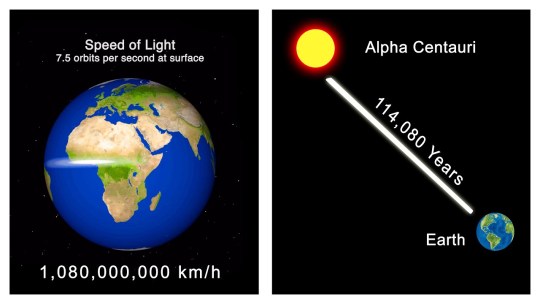
#Richard Feynman#space#astronomy#magnitude#scale#galaxy#milky way galaxy#light speed#speed of light#light year#science#religion is a mental illness
143 notes
·
View notes
Text

Galactic Core
"This dazzling infrared image from NASA Spitzer Space Telescope shows hundreds of thousands of stars crowded into the swirling core of our spiral Milky Way galaxy."
Image and information from NASA.
131 notes
·
View notes
Text
2024 March 28

Millions of Stars in Omega Centauri
Image Credit & Copyright: Massimo Di Fusco and Mirco Turra
Explanation: Globular star cluster Omega Centauri, also known as NGC 5139, is 15,000 light-years away. The cluster is packed with about 10 million stars much older than the Sun within a volume about 150 light-years in diameter. It's the largest and brightest of 200 or so known globular clusters that roam the halo of our Milky Way galaxy. Though most star clusters consist of stars with the same age and composition, the enigmatic Omega Cen exhibits the presence of different stellar populations with a spread of ages and chemical abundances. In fact, Omega Cen may be the remnant core of a small galaxy merging with the Milky Way. With a yellowish hue, Omega Centauri's red giant stars are easy to pick out in this sharp, color telescopic view.
#astronaut#astronomers#not astrology#star#stars#art#astronomy#outer space#space#artist#galaxy#NGC 5139#NGC#Omega Centauri#cluster#star cluster#globular cluster#sun#milky way#milky way galaxy#telescope#omega cen
23 notes
·
View notes
Video
Elephant Arch Nightscape by James Marvin Phelps
Via Flickr:
Elephant Arch Nightscape Valley of Fire State Park Nevada April 2023
#nevada#valley of fire#night sky#milky way galaxy#milky way#stars#mojave desert#landscape photography#nature#outdoors#sandstone#sky#james marvin phelps photography#arch#sandstone arch#elephant arch#flickr
38 notes
·
View notes
Text
Today, I was listening to an EAS Scenario video where NASA discovered the "Big Crunch"(Basically the opposite of The Big Bang)
Then I got a idea while listening to the video, and now I'm introducing this Galaxy
Meet The Collapsed Galaxy. An type of Galaxy that Collapsed due to something being wrong with the Galaxy, to the point it collapsed early
The Galaxy was 1200 yrs old. It was so young😭
Anyways, if the birth of an Galaxy goes wrong, the Galaxy itself lives less due to the severe problems while processing the birth, galaxies with this problem live from 700-1600 yrs.
This is all the sh-t I got but if an Galaxy was to collapse, all planets and stars, basically anything in that galaxy would f-king die and never be seen again
Dw guys I made an little baby that I totally didn't steal from the Galaxy. Haha
Oh yeah forgot to mention this but The Collapsed Galaxy was called "The Milky Way and Andromeda's friend" by some mortals and Ig NASA
@insanelyadd @owhouselover
#toh oc#The big crunch EAS Scenario#The big bang#-The Collapsed Galaxy_TOH Galaxy#andromeda galaxy#milky way galaxy#nasa#Scorpius_TOH OC#eas scenario
22 notes
·
View notes
Note
🌌



#my stuff#ask me anything#ask#nintendoneko64#milky way galaxy#galaxy#anime gif#anime#gurren lagann#space#beautiful
31 notes
·
View notes
Text
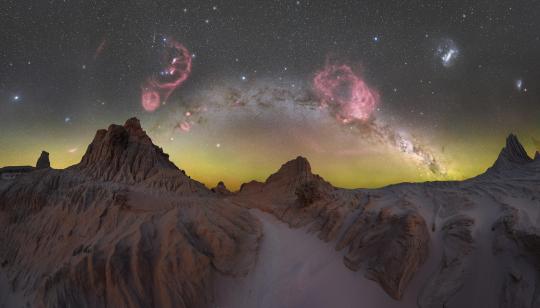
The Milky Way arching over Lake Mungo, Australia // John Rutter
#astronomy#astrophotography#night sky#beautiful#landscape#galaxy#spiral galaxy#our galaxy#our home#milky way#milky way galaxy#nebula#emission nebula#lake mungo#new south wales#australia
270 notes
·
View notes
Photo
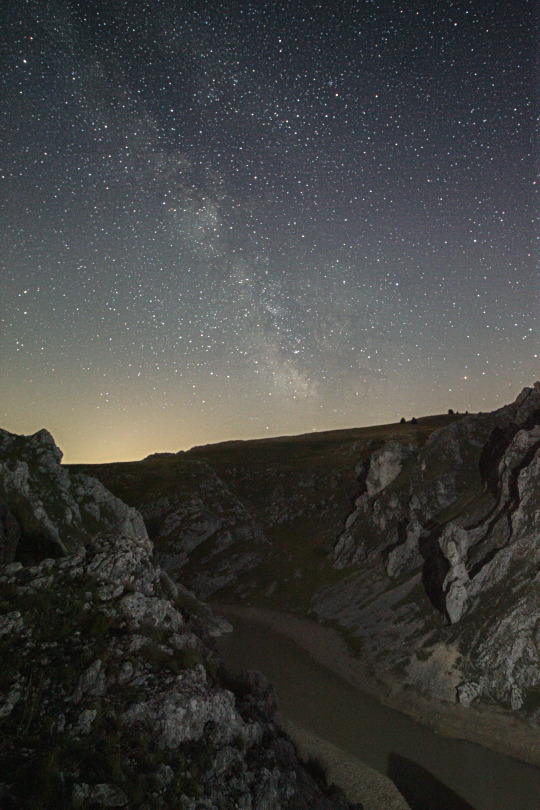
Campo Imperatore e la sua Via Lattea
Abruzzo
Italy
#italian photography#robertocastigliaphotography#campo imperatore#abruzzo#italy#astronomy#science#constellation#constellations#galaxy#universe#night#sky#stars#stars photography#space#deep space#astrophotography#milky way galaxy#via lattea
295 notes
·
View notes
Text

A human skull was found in space! 💀 (Don’t worry, it’s a nebula.)
This image was captured by amateur astrophotographer Curtis Morgan.
It depicts the Rosette Nebula, a turbulent star-forming region located 5,000 light-years away in the constellation Monoceros. ✨
By the way, there is another object nicknamed “Skull Nebula” — NGC 246. Don’t confuse them!
Image Credit: Curtis Morgan / NASA / ESA
—
The Rosette Nebula (also known as Caldwell 49) is an H II region located near one end of a giant molecular cloud in the Monoceros region of the Milky Way Galaxy.
#Rosette nebula#nebula#Monoceros#Curtis Morgan#space#astronomy#astrophotography#Skull Nebula#NGC 246#NASA#ESA#Caldwell 49#Milky Way Galaxy
26 notes
·
View notes
Text

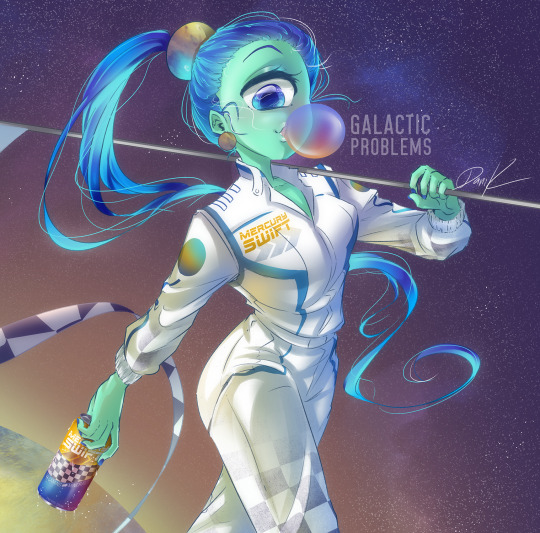
🏁START YOUR ENGINES! 🏁
I've wanted to draw Phoebe in a space setting for a while (since she's an alien), with each planet getting a theme.
The theme for Mercury is speed! Mercury is the fastest planet in our galaxy, so a racer outfit and energy drink combo fit the bill.
The colors I used for Mercury aren't how it would actually look, but were instead produced by NASA in a color base map imaging campaign. It shows how the chemicals, minerals, and rocks look like on the surface with color!
I'll be working on this series in between other projects, so stay tuned.
31 notes
·
View notes
